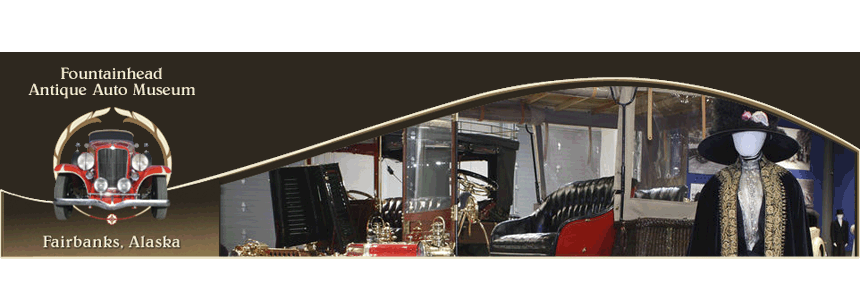© Fountainhead Antique Auto Museum

Our first three-wheeled car, a 1911 Kelsey Motorette, arrived last week after a freshening and new paint job by Murray Motor Car in Monroe, WA. This tricar has two wheels in front and a single driving wheel in the rear. “One more than a motorcycle, one less than an automobile," boasted its inventor, "with the low cost and light weight advantages of the former, the comfort and reliability of the latter.”
 After a brief association with the Eisenhuth Vehicle Company
selling Compound automobiles, Cadwaller “Carl” Washburn Kelsey became the sales manager for Maxwell-Briscoe
autos and soon built up the most powerful sales organization in the industry. A
master of publicity stunts, it was Kelsey who convinced Alice Ramsey to drive
across the continent in a Maxwell in 1909. After a falling out with Ben Briscoe
later that year, he formed the C.W. Kelsey Manufacturing Company.
After a brief association with the Eisenhuth Vehicle Company
selling Compound automobiles, Cadwaller “Carl” Washburn Kelsey became the sales manager for Maxwell-Briscoe
autos and soon built up the most powerful sales organization in the industry. A
master of publicity stunts, it was Kelsey who convinced Alice Ramsey to drive
across the continent in a Maxwell in 1909. After a falling out with Ben Briscoe
later that year, he formed the C.W. Kelsey Manufacturing Company. The first Motorettes were introduced in September of 1910. The prototypes had a tendency to roll while cornering, so an anti-sway bar was added to counteract this problem. This stabilizer rod was mounted crossways in the front and connected to the ends of the axle. This forced both front springs to work up and down together and kept the car frame parallel to the road surface. The single rear wheel connected to the chassis by a pair of flat leaf springs, which further improved stability. Kelsey claimed that because the Motorette was always on a three-point suspension, a bumpy road could never twist or throw out of alignment any part of the car.
Kelsey Motorettes were initially powered by a 7 HP 2-stroke,
2-cylinder opposed engine that was air-cooled. In 1911, Kelsey switched to water-cooled
engines and boosted the horsepower to 10. The first models carried a gas tank behind the seat, while later ones, like ours, carried a radiator there. Top speed was around 25 mph, and fuel efficiency was 30 mpg.
 Kelsey’s intent with the Motorette was to offer a
high-quality pleasure vehicle at a price within reach of the average man. At
$385, it was well below the price of the Model T, which cost $900 in 1910 and
$680 in 1911. In addition to reducing costs by having one less wheel to buy
tires for, the tricar design eliminated the need for a rear axle and
differential. Advertisements proclaimed the car’s simplicity (“a healthy girl
of ten can crank it”) as well as the quality of materials used in its
construction. In yet another publicity stunt, Kelsey had two men drive a Motorette
from New York to San Francisco in the winter of 1911. The feat proved that the Motorette’s
reliability, strength, and durability were the equal of big, expensive cars.
Kelsey’s intent with the Motorette was to offer a
high-quality pleasure vehicle at a price within reach of the average man. At
$385, it was well below the price of the Model T, which cost $900 in 1910 and
$680 in 1911. In addition to reducing costs by having one less wheel to buy
tires for, the tricar design eliminated the need for a rear axle and
differential. Advertisements proclaimed the car’s simplicity (“a healthy girl
of ten can crank it”) as well as the quality of materials used in its
construction. In yet another publicity stunt, Kelsey had two men drive a Motorette
from New York to San Francisco in the winter of 1911. The feat proved that the Motorette’s
reliability, strength, and durability were the equal of big, expensive cars.Just over 200 Kelsey Motorettes were produced from 1910 to 1912, including several that were adapted as motorized rickshaws, with the driver sitting behind the passengers. In 1913 C.W. Kelsey announced plans to build 300 electric Motorette rickshaws for the 1915 Panama-Pacific International Exposition, but this never came to fruition. Only a handful are Kelsey Motorettes are known to survive. We hope you will come see ours!
Coming to Fairbanks to see the Fountainhead Antique Auto Museum and other area attractions? Support the museum by staying right here at Wedgewood Resort.



No comments:
Post a Comment
Blogging about the Fountainhead Antique Auto Museum's latest news, adventures and research